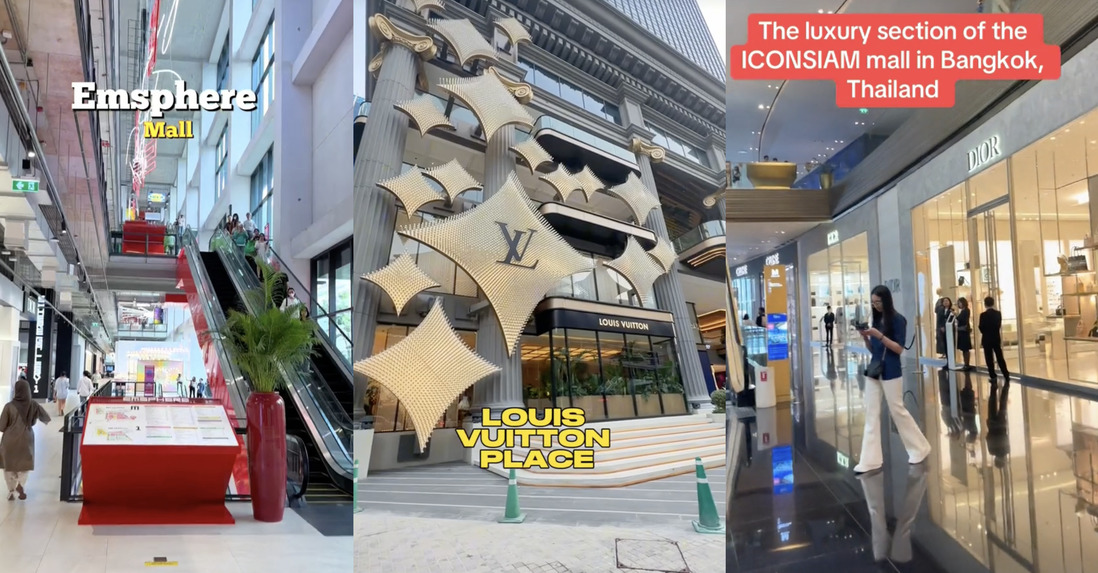SINGAPORE: Thailand’s luxury market is set to surpass Singapore’s in 2024, with estimates projecting Thailand’s market value at $4.93 billion, compared to Singapore’s $4.23 billion. A recent report published by Canvas8, a global strategic insights practise with expertise in cultural and behavioural trends, highlighted how Southeast Asian shoppers are changing the global luxury landscape, with countries like Thailand and Vietnam challenging luxury hubs like Singapore.
The report, “How are Southeast Asian shoppers changing luxury?” was authored by Gwyneth King, with insights from Toch Barreiro, a creative director at Serious Studio in Manila, and Jose Luis Legaspi, a former marketing lecturer at De La Salle University in Manila.
Mr Legaspi pointed out that the growth of the Asian economy over the past two decades has made the Asian luxury consumer a major force in the market.
“The Asian luxury consumer has become a powerhouse in purchase and spending. Decades ago, it was only Japan that spearheaded the Asian luxury market, and it was Chinese tourists who came in droves when visiting fashion capitals like London or Paris,” he explained.
“Top luxury brands are now focusing their marketing efforts to sign up Asian endorsers that represent their current biggest market,” he added.
The luxury market in Southeast Asia is booming, supported by a rising number of ultra-high net worth individuals (UHNWI). Countries like Singapore, Malaysia, and Indonesia are leading this growth. The total revenue from the Southeast Asian luxury market is expected to hit $16.01 billion in 2024, up from $14.38 billion in 2022, which is prompting brands to adjust their marketing strategies to connect with the younger, trend-conscious audience.
Caroline Murphy, president of sales and business relations at Siam Piwat, noted that the pandemic has changed how Thai people spend, “to indulge themselves without holding back.”
She shared how many Thai consumers are now willing to buy luxury goods at a younger age, inspired by figures in Asian pop culture.
While Singapore has long been a key destination for luxury shopping, Thailand and Vietnam are now catching up. Wealthy shoppers from neighbouring countries like Cambodia, Laos, and Myanmar are increasingly choosing Thailand for luxury goods due to its growing market and limited options in their own countries.
According to Mr Barreiro, branding is crucial in this market. He said, “Whether we admit it or not, it’s logo-driven. The execution is what differs. You can wear a plain white t-shirt with subtle embroidery or go all out with a monogram pattern on an accessory. Branding matters since that’s what you ultimately pay for when it comes to luxury.”
Pop culture also plays a big role in Southeast Asia’s luxury market as younger consumers are heavily influenced by celebrity endorsements. Thai actors like Nattawin ‘Apo’ Wattanagitiphat and Phakphum ‘Mile’ Romsaithong, along with Vietnamese star Sõn Tùng M-TP, have become key figures in luxury marketing campaigns.
Shopping malls also remain central to the luxury shopping experience in Southeast Asia.
@lifeinthailandnow 3 Luxurious Shopping Mall in Bangkok that you can easily access by BTS Phrom Phong. These 3 are most popular shopping centers in Bangkok for brands shopping. 1: Emquartier Mall 2: Emporium Mall 3: Emsphere Mall #bangkok #bangkokfashion #bangkokshopping #bangkoktravel #thailandtravel #fypシ゚viral ♬ Canon in D (Piano Version) – Hamasaki vs Hamasaki
Innovative concepts like Thailand’s EmSphere and collaborations, such as Louis Vuitton’s project with chef Gaggan Anand, show a move towards creating engaging shopping experiences that resonate with consumers.
@puplelampad #PlacestovisitinBangkok @Puple Lampad 🇵🇭🇹🇭 Add this to your list if you’re coming to Bangkok this year! #bangkok #placestovisitinbangkok #luxurybangkok #luxuryexperience #visionaryjourneys #louisvuittonvisionaryjourneys #louisvuitton #bangkokthailand ♬ original sound – Puple Lampad 🇵🇭🇹🇭
The second-hand luxury market is also growing, with 72% of Southeast Asians open to buying pre-owned items. Mr Legaspi noted that purchasing these items often begins a consumer’s journey with a luxury brand, leading to loyalty over time.
Nick Morris, managing director of Canvas8, added, “To successfully navigate the Southeast Asian luxury market, brands must look beyond traditional marketing moments and focus on localised, culturally relevant approaches. Engaging with local pop culture and creating aspirational yet accessible luxury experiences can drive deeper connections with consumers. By understanding the unique preferences and influences of Southeast Asian shoppers, luxury brands can capitalise on this vibrant and evolving market.”
To know more about the report, check here. /TISG

